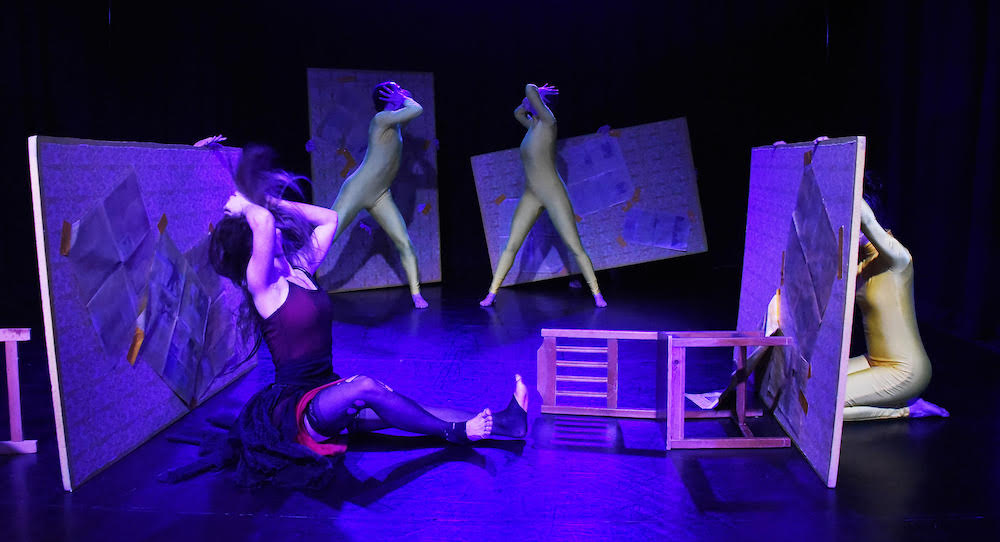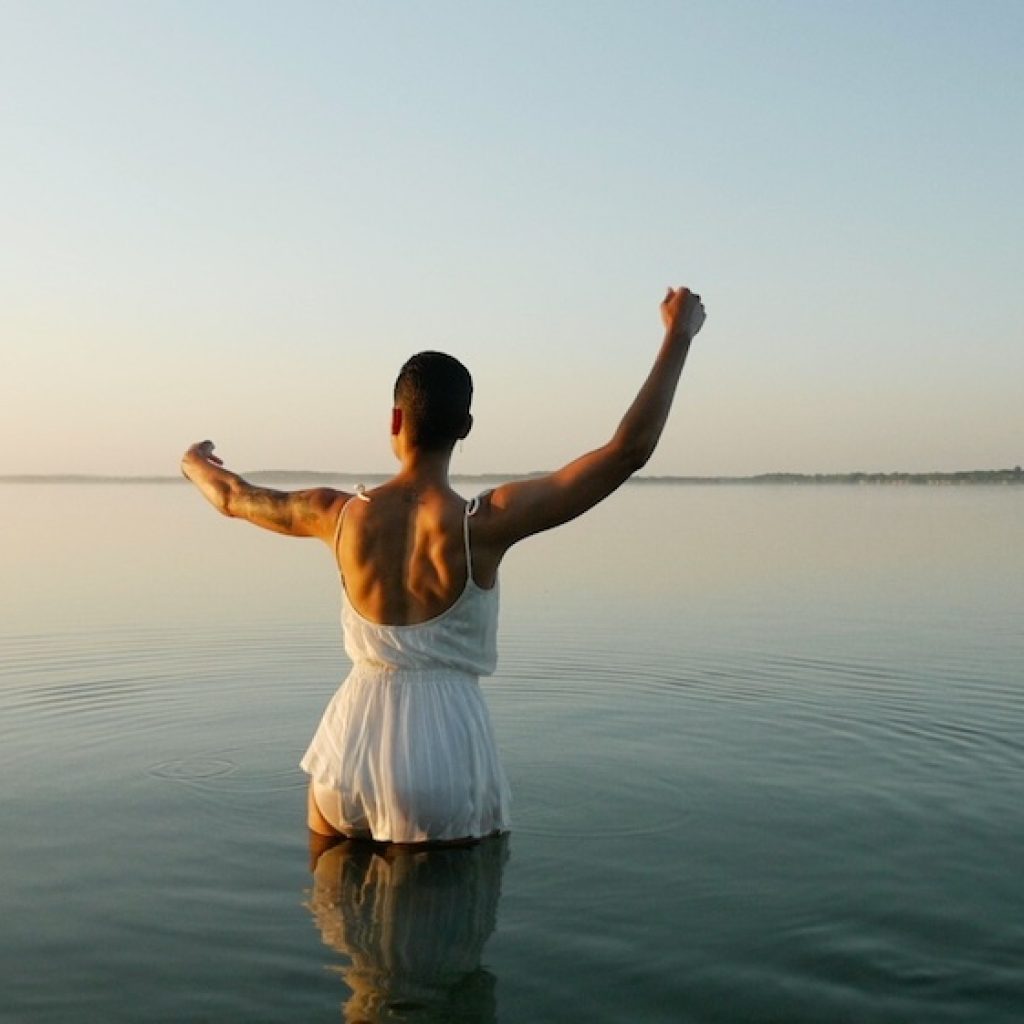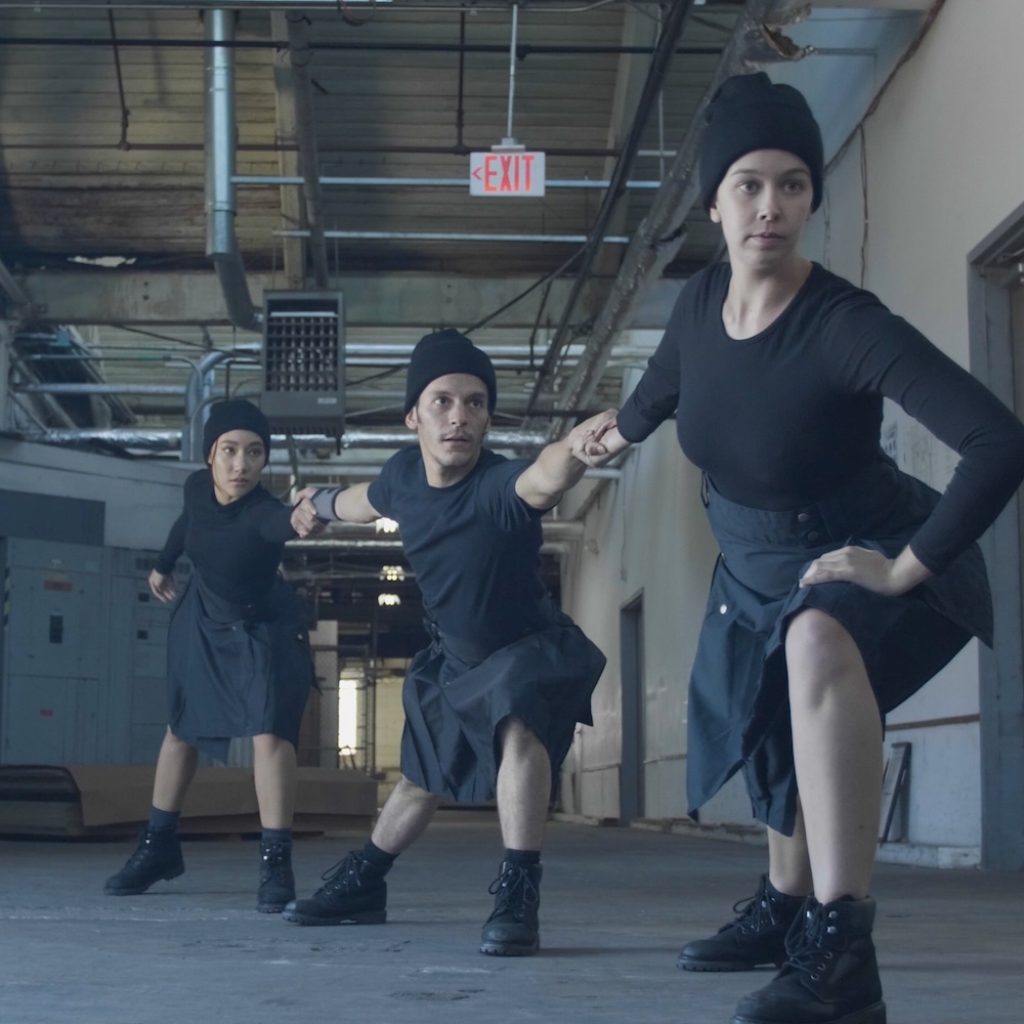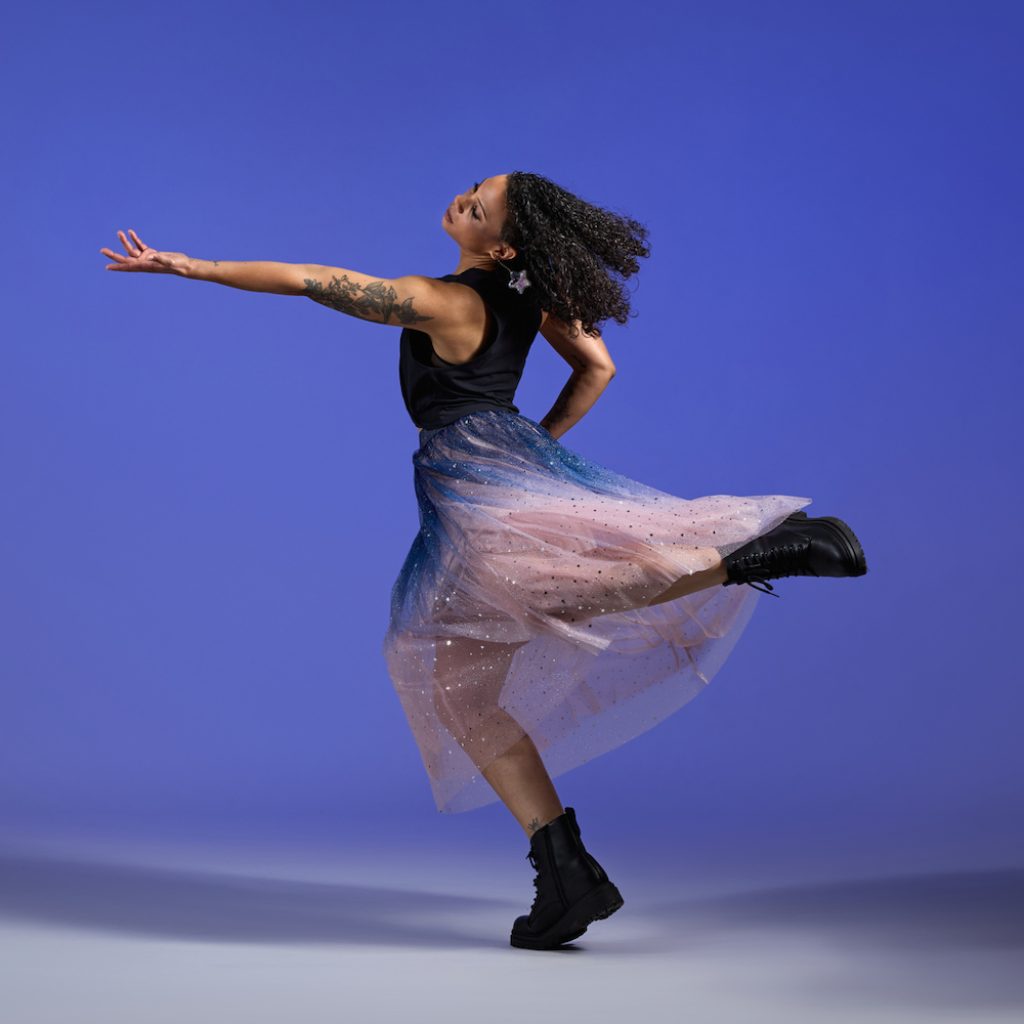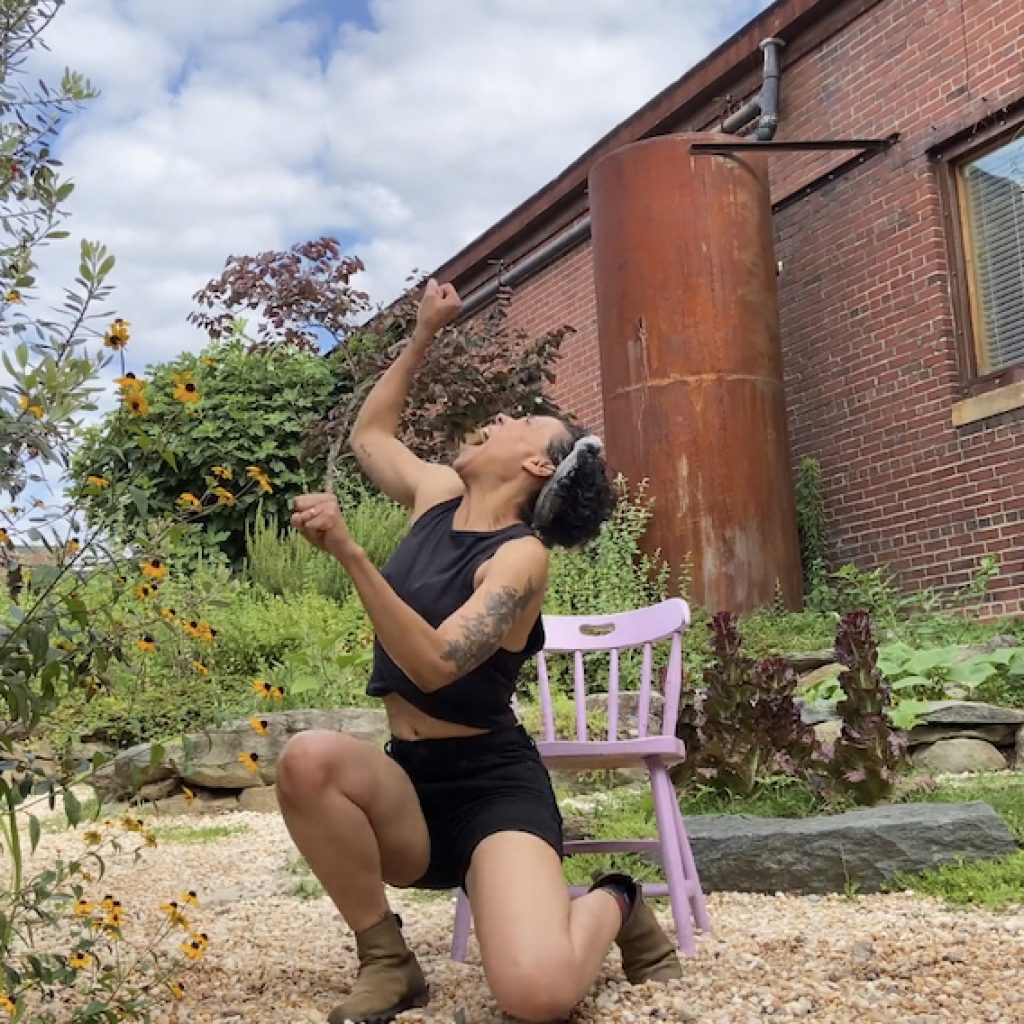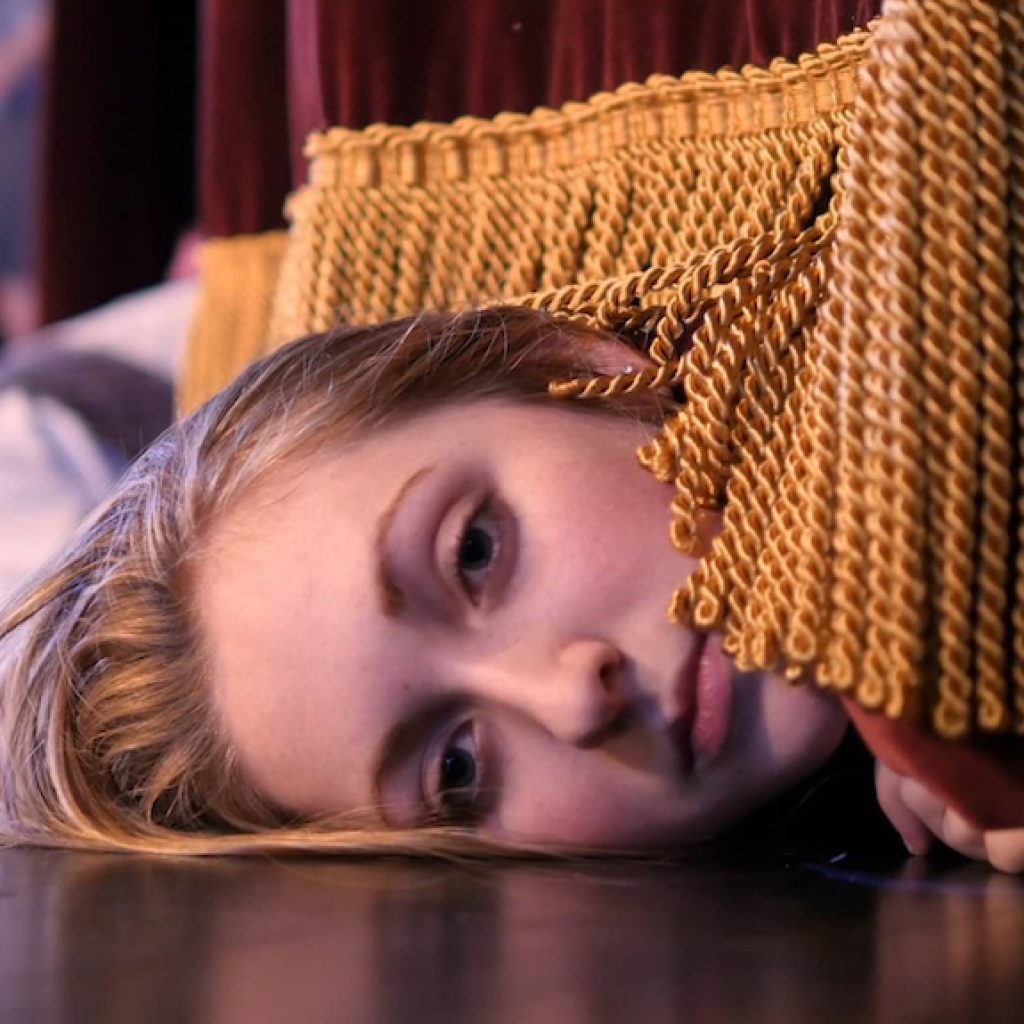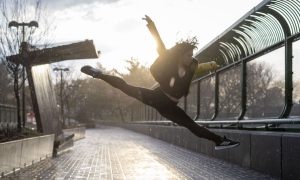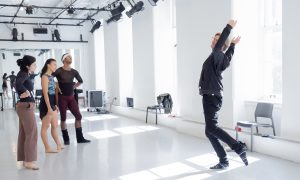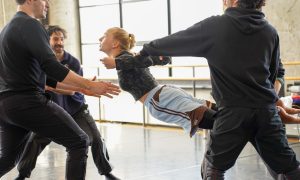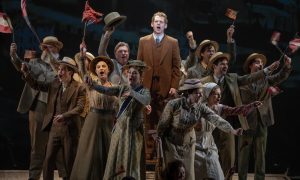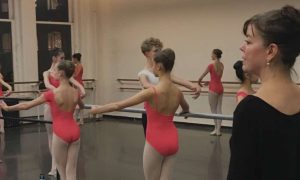The camera angle shifts from a stylized lift to a supple arm movement. The next shot pans back out to a larger group dancing in a lush natural setting. Dance film: it’s certainly not quite the art of dance that we see on concert stages. More artists ventured into the medium during, and after, COVID lockdowns – yet people have been dancing on film for as long as there has been film.
It’s still dancing, yes, calling upon a solid base of technical training and artistry. Yet, dance artists must approach the work somewhat differently than they approach performing live. The process offers different benefits as well as unique, and significant, challenges: physical, mental, logistical and more. What can dancers new to film work expect? How can they bring their best to set, as well as adequately care for their instrument?
To learn more about these matters and more, Dance Informa speaks with three dance artists experienced in film work. Cara Hagan has had her “fingers,” as she says, in a wide range of roles in dance film: performing, directing/choreographing, festival production (Movies by Movers through the American Dance Festival), writing (Screendance from Film to Festival – Celebration and Curatorial Practice; McFarland, 2022), and teaching university courses (at the London Contemporary Dance School).
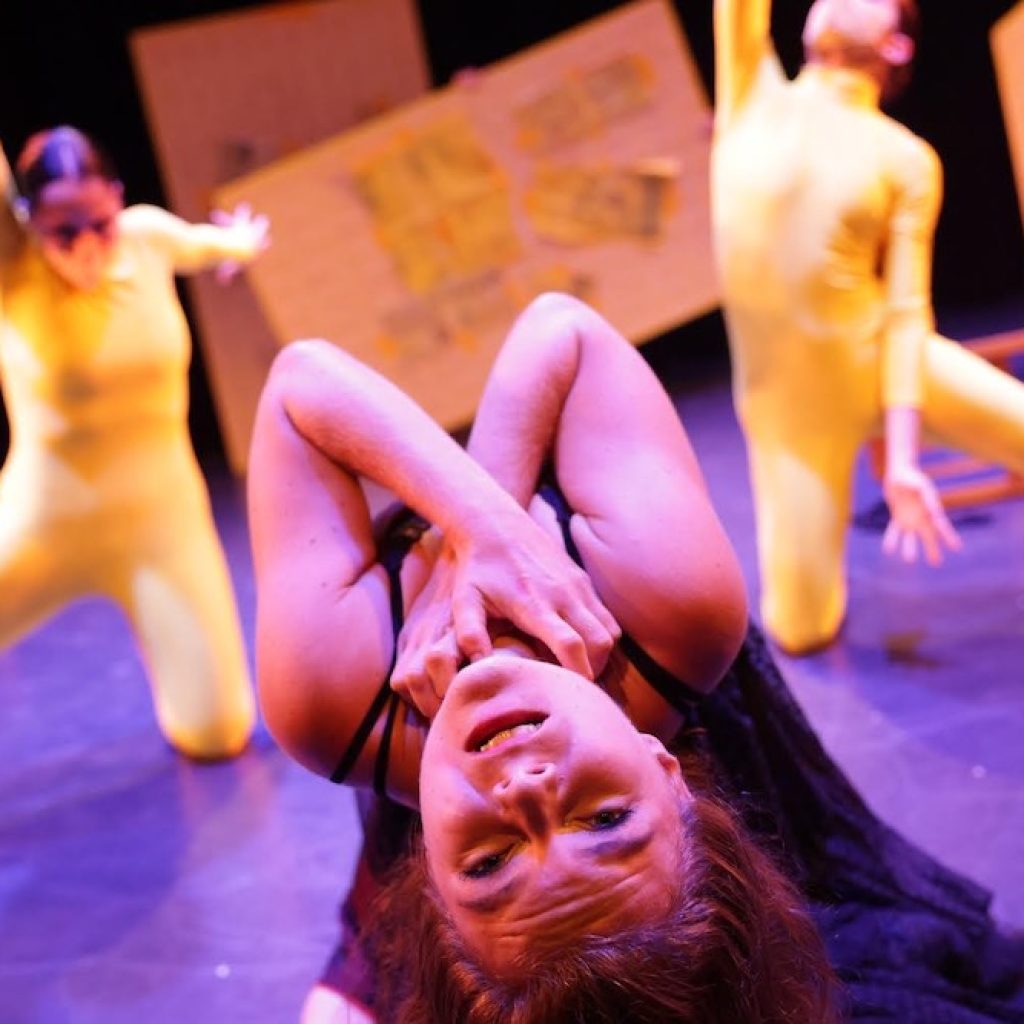
Madelaine “Maddie” Burnett began her performance career with onscreen acting (Supernatural fans might recognize her as a young girl), has performed in a variety of film dance projects, and generally has always been drawn to character-driven, theatrically-based work. Marta Renzi is a long-time dance filmmaker, having created over 35 films shown at over 100 festivals. They all note, with sincere appreciation and passion, how dance film offers tools and possibilities that simply aren’t available with live dance.
“Dance is so fleeting and ephemeral,” Burnett notes. “Dancing for camera creates a keepsake of the work that you can go back to as many times as you want. A camera can also get more intimate and capture the subtle, natural human parts of the story that a concert audience may not be able to catch as easily.” Dance film work can also be seen all over the world, regardless of where it’s made – making it more accessible than live dance, she also reminds us.
#1. Be prepared for a different kind of commitment; the ‘hurry up and wait’ is real. Refine the kind of warming up and energy maintenance that works for you.
Hagan doesn’t mince words. “Film work can be super uncomfortable…it’s freezing or 90 degrees out, or you’re dancing on concrete.” It’s often site-based or site-specific, which frequently comes with less-than-ideal environmental conditions; it’s no kind of temperature-controlled theater or proscenium with Marley flooring.
Renzi notes how it can therefore sometimes be a challenge to stay adequately warm on set, so that you’re ready to go whenever the director is ready to call “action” – at your energetic best, and without (or with minimal) risk of injury. The “hurry up and wait” dynamic can be quite present; you may be ready to go, but a lighting issue could delay filming for hours.
Yet, constantly moving in order to stay warm can burn your energy out. Burnett stays warm through taking a morning ballet class (or even just doing a barre at home), and then focusing on main important body areas — for example, core, feet and overall muscular range. Basic physical tools like planks can do wonders for keeping warm but not getting exhausted, she notes.
There is “hurry up and wait,” yes, but also having to do take after take and fully “inhabiting” the movement with each. “Make each take something that the director can use,” Hagan encourages. Dancers need impressive stamina in order to meet that demand – so don’t forget your endurance training, she says. Renzi also uses the word “inhabit”. As long as you’re doing that, dancing all the way full-out may not be necessary. Riding that line and finding that balance can help manage your energy on set.
The context can also mean a different kind of energy then, say, when you’re dancing in a fancy theater and you can see excited audience members from the wings. Pre-performance “jitters” are signs of your body pumping adrenaline, which (if properly channeled) helps fuel your performance. Dancers doing on-camera work have to find that fuel from somewhere else, Burnett notes – especially if that day becomes take after take after take.
That morning ballet ritual also helps prepare her mentally, ready to bring whatever she needs to that day, she says. She also advises continuing to come back to the emotional truth of the work at hand. Chances to do multiple takes, versus having your one shot for a live audience, can also be something to embrace and leverage toward your best work, Burnett adds.
If you’re dancing with a partner, that can also help keep up the onscreen “electricity,” Renzi notes. With any of these tools – or any others that a dancer may discover works for them – the important thing is having ways “to be present for every shot, and to keep yourself in the zone…you have to be onboard for a truly durational experience,” Hagan says.
#2. Consider subtleties, the intention behind them and emotional truth…study acting, if possible!
A stage context is more forgiving of “a facial expression that doesn’t fit [the moment] than the camera is, because the face reads more on a screen,” Renzi notes. Often onstage work calls for enlarging movement and presence, whereas it’s frequently the opposite with on-camera work, she says. “Film asks for subtlety, and a dance film director might ask for a certain type of subtlety – for a small movement to be captured a certain way – so it helps to have a range of that available,” Hagan explains. “There’s of course subtlety with work onstage, but it’s a different kind…it’s a different approach to physicality.”
How to create and refine that subtlety, one may wonder? Firstly, “be clear on what your intention is, even if you have to find that out from the choreographer/director,” and stick with that, Renzi advises. Consider objective and motivation, what your character/persona wants most in the captured moment. Something as simple as the direction of gaze could be part of that. “Just don’t be vacuous, or show something that’s not your intention,” Renzi cautions.
Hagan and Renzi agree that making those choices is important, because it gives the choreographer/director something to shape. If it’s not quite what they’re looking for, they can redirect you. That’s better than not having much to work with. Burnett also agrees on making clear choices, and asking questions if you’re not sure. She also shares helpful tips for how to bring something that the director can mold into what they’re looking for.
“Start from a place of truth; finding the truth of the character is an important part of the process,” she advises. Make it real for you, even if you haven’t lived the exact same experiences as your character/persona. For example, Burnett has danced work about children who are affected by war (Alison Cook-Beatty’s Echoes of War). That’s never happened to her, but she has experienced loss and precarity in life.
Those are experiences she can draw on – and having a whole repertory of those can be incredibly helpful for those long days on set when you can feel your energy and creative “spark” waning. Burnett has also found it helpful to write out a script for the character/persona she’s dancing. She’ll never speak those words on camera, most likely, but it’s helpful for her process.
Burnett also practices facial expressions and “how the eyes speak” in the mirror, or even somewhere like the subway, in order to hone those “microscopic details” that the camera does pick up. “You’re not practicing the face, but the feeling,” she underscores. Beyond private work as an artist, Burnett also emphasizes the importance of listening; “acting is reacting.” In dance, that’s often kinetic responsiveness to – and attunement with – other ensemble members.
Hagan also says that getting comfortable with the movement material can help (whether it’s choreographed or improvisational – both of which occur with film dance, she says). Especially if you’re newer to on-camera work, “you might feel self-conscious in a way you haven’t before – because we don’t always perform with a camera in our face. Just master the material and let that bring you confidence. Try to be ‘in it’ and not focused on ‘messing up’,” she advises.
Overall, “if you feel like you’re acting, you’re not quite there,” Burnett believes. Acting classes can help build experience with all of this – and all three of our experts recommend taking them, if possible. Every kind of art – yes, including dance and theatrical work – tells a story and/or evokes feeling, Burnett reminds us. “Dancers have to learn to channel that through their body.”
#3. Do your research (character-based and on this kind of work in general).
Further background research is another tool that Burnett uses to flesh out her performance, to make the character her own. That may be even more important in the context of a film set, without fodder for that readily available otherwise, she notes. Reading up on the histories, contexts and issues involved with the work can help. Additionally, can you speak to someone who’s had the kind of experiences that your character/persona has?
Burnett has done that for Echoes of War through speaking with her grandmother, who has lived that experience. That sort of information can help lead dancers to better understand the emotions or mindsets at hand — hope, naivete, sadness, anger, et cetera. That can avail them of a repertory of life experiences to draw upon, those that have drawn up such emotions in them.
Hagan also advocates learning more about dance on film, which indeed has been around for more than a century. There are lots of those resources for us to learn from, from way back, she underscores. “Read about your dance role models and how they approached the work!”
#4. Be the kind of collaborator that people will want to work with again.
Hagan shares that she treasures the collaborative nature of making dance film. “I love seeing things through others’ eyes, seeing my idea through another’s interpretation.” Collaboration can certainly feel wonderful, but it also requires us to come to the process prepared. “It’s an interdisciplinary art form, and the people who collaborate have to be interdisciplinary,” she notes.
That includes developing awareness of the language and techniques in which filmmakers work. Learn about, and keep in mind, aspects such as scale, proximity to camera, and camera angles, Burnett recommends. Refine the relationship of your gaze and the camera; don’t look into it, but don’t avoid it, Renzi advises.
Hagan also explains that collaboration could look quite different from director to director; some give a lot of direction, and others ask more independent choices of the artists with whom they work. “Be able to receive” both kinds of direction, or from really anywhere on that spectrum.
When all is said and done, good collaborators can not only help create a better final product, they can also make the process smoother and more enjoyable for all involved. “Come into the space ready to be a joy to work with, and they’ll want to do so again,” Hagan believes. Your training, how you look dancing on screen, and how you engage in a working creative environment: both matter, she says. “Show up to the process with an open heart and mind.”
By Kathryn Boland of Dance Informa.


